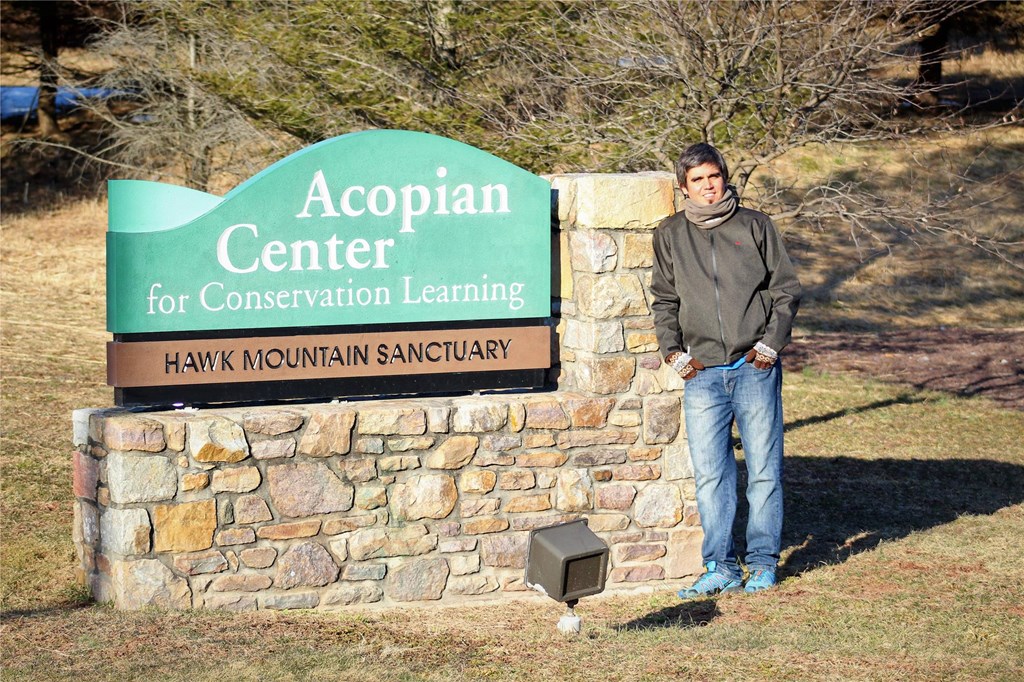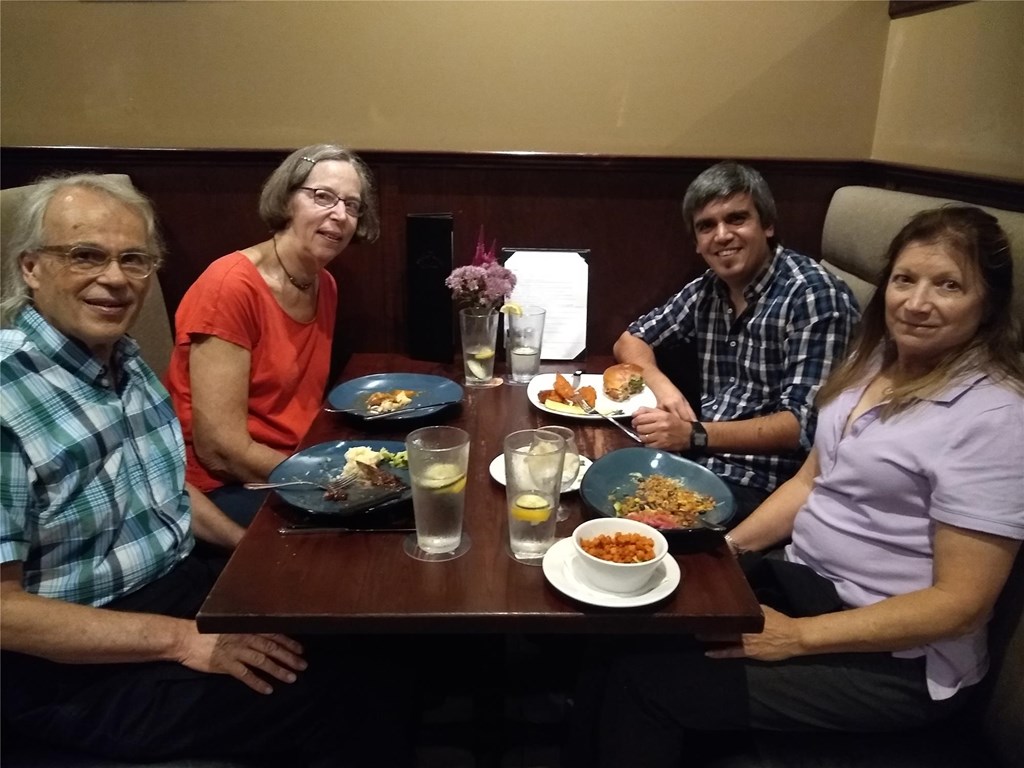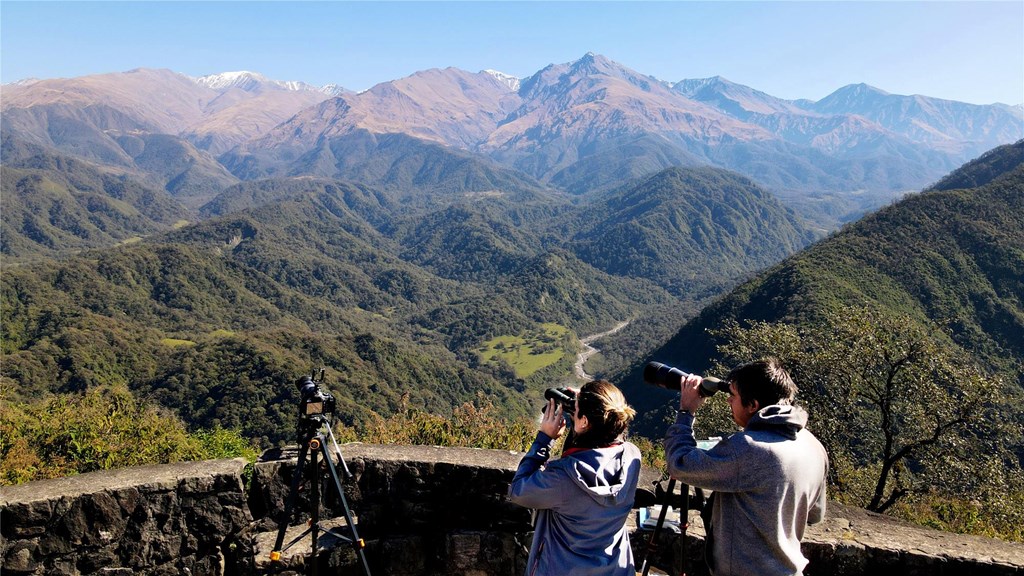The First Flight: My Journey to Hawk Mountain
Posted on in In the Field by Fernando Lopez, Spring 2018 Conservation Science Trainee

In 2018, midway through my five-year PhD in Argentina, I boarded a plane to the United States for the first time. Until then, I had only traveled to neighboring countries, never far from home. That flight marked a personal milestone, but also a professional turning point.
I had been selected as a Conservation Science Trainee at Hawk Mountain Sanctuary, a place I knew by reputation long before ever setting foot in Pennsylvania. For three months, I joined a global cohort of young scientists to learn not only about raptor ecology, but about the role of science in society.
We counted migrating hawks from sunup to sundown, conducted field research, and talked to visitors about the wonder of raptors. I came seeking skills. I left with a mission and a lifelong connection.

Learning the art of watching the sky
The Conservation Science Traineeship at Hawk Mountain was unlike anything I had experienced in my academic career. Each day began with binoculars in hand, counting migrating raptors from the lookouts. I learned how to identify species in flight, detect subtle differences in silhouette and behavior, and contribute real-time data to one of the world’s longest-running raptor migration counts.
Beyond the fieldwork, we participated in weekly seminars on raptor ecology, migration science, and conservation strategies. These sessions were led by experts from HMS, and they broadened my understanding of global challenges and solutions in raptor conservation.
Living on-site with other trainees and interns, I connected with conservationists from diverse backgrounds, people who shared not only my passion for birds but also a belief in the power of education and public engagement. That mix of rigorous science and strong community is something I’ve carried with me ever since.

Staying connected across continents
Even after my traineeship in 2018, the connection with Hawk Mountain remained strong. In 2019, I returned to the Sanctuary for a weekend visit while attending a short course at Powdermill Nature Reserve. During that visit, I had the chance to attend Birds & Brew, one of HMS’s beloved community events. It was the perfect mix of science, nature, and celebration, a reminder that conservation is also about joy and togetherness. Later that year, I contributed a reflection for the Hawk Mountain News.
In 2021, I gave a motivational talk for the new trainees, sharing lessons from the field and reflections on building a career in conservation. When my wife, my cat (Batman), and I moved to Washington, D.C. in 2022 for my postdoc at the Smithsonian Institution, Deborah Edge (granddaughter of HMS founder Rosalie Edge) and her husband Neil welcomed us into their home during our first month, offering warmth and support.
Throughout the years, Hawk Mountain has continued to support my journey. I’ve stayed in touch with staff, collaborated on ideas, and even received a key recommendation from Jean-François Therrien, HMS’s Senior Scientist, that helped me secure the postdoc.
In early 2023, I returned to HMS for hands-on training on how to fit GPS transmitters on raptors, skills that are often out of reach in Argentina due to limited resources.
From 2018 to today, the connection has remained active: built on shared values, mutual respect, and a belief in conservation that transcends borders.

A shared vision takes shape
In 2025, after completing our postdoctoral fellowships in the United States, my wife (Virginia Tech) and I (Smithsonian Institution) found ourselves at a crossroads. We were considering our next steps, whether to pursue another academic position abroad or return home to Argentina, while also feeling the need for a pause, a moment to reconnect with the essence of why we became scientists in the first place.
That’s when et al Blog was born.
With our cat Batman on board, we bought a motorhome and turned it into our moving home and field station. We set out on a journey across the Americas with a simple but powerful idea: to explore the continent through the lens of birds and science, creating connections with ornithologists, conservationists, and local communities along the way. We also plan to conduct the world’s longest vulture survey on the road.
We share our experiences through multimedia content, organize outreach events, and use creative storytelling to make science accessible and engaging. What began as a personal adventure quickly turned into a movement, one grounded in collaboration, curiosity, and conservation.
From the beginning, the philosophy of Hawk Mountain was there with us: science that travels, educates, and inspires action.

From traineeship to shared mission
Before leaving Washington in 2025, we made one more stop: Hawk Mountain. We visited them during their annual gala, this time arriving in our motorhome with Batman, of course, and shared our idea for a new kind of journey. We talked about taking science on the road, connecting with people through birds and stories, and using creativity as a tool for conservation.
The HMS folks listened with genuine enthusiasm. Their response was simple: “What do you need?” That spirit of openness and collaboration stayed with us. Shortly after, Hawk Mountain became the lead sponsor of et al Blog, helping us take our vision further, both literally and figuratively.
Their support has allowed us to expand our outreach, connect with more communities, and spotlight important conservation stories across the Americas. This collaboration is a reflection of something deeper: the belief that science belongs not only in academic spaces, but also on the road, in nature, and in everyday conversations.
Hawk Mountain continues to inspire us, not just as scientists, but as storytellers and educators on a mission to connect people with birds and the natural world.
Join the journey
This story began with a traineeship and has grown into a shared mission that spans borders, disciplines, and years. If there’s one thing we’ve learned from migratory raptors, it’s that long journeys are possible when you follow the right winds, and that lasting connections can truly change the world.
We invite the Hawk Mountain community, and all who believe in the power of science and storytelling, to join us. Follow our journey, share our mission, and help us keep these skies full of wings, ideas, and hope.